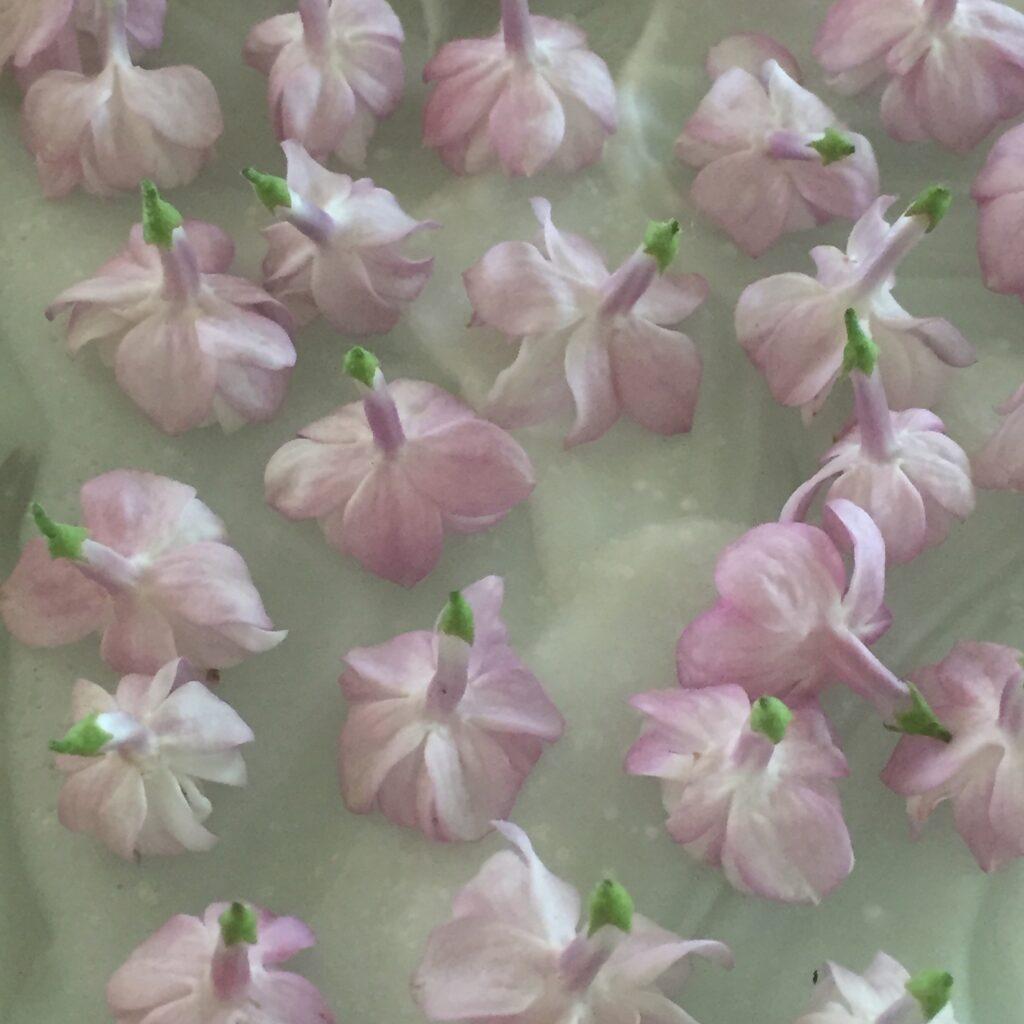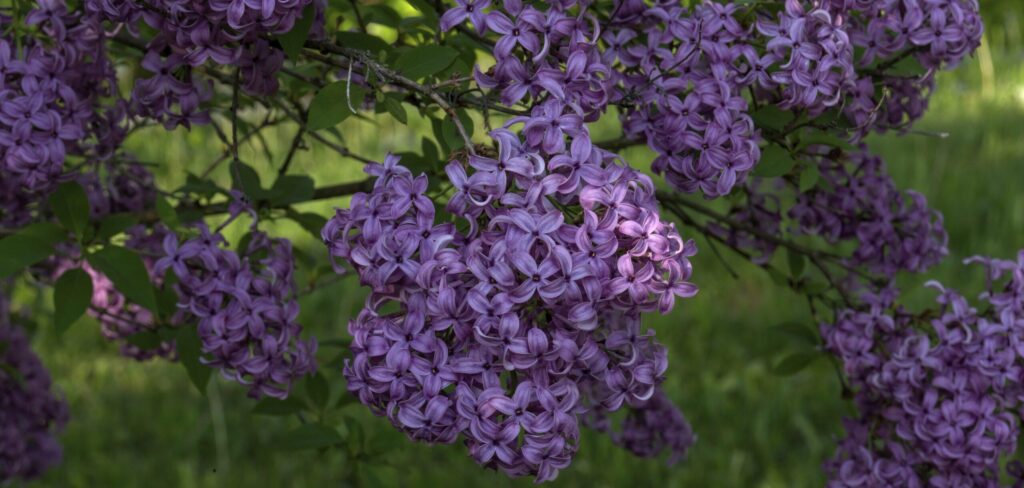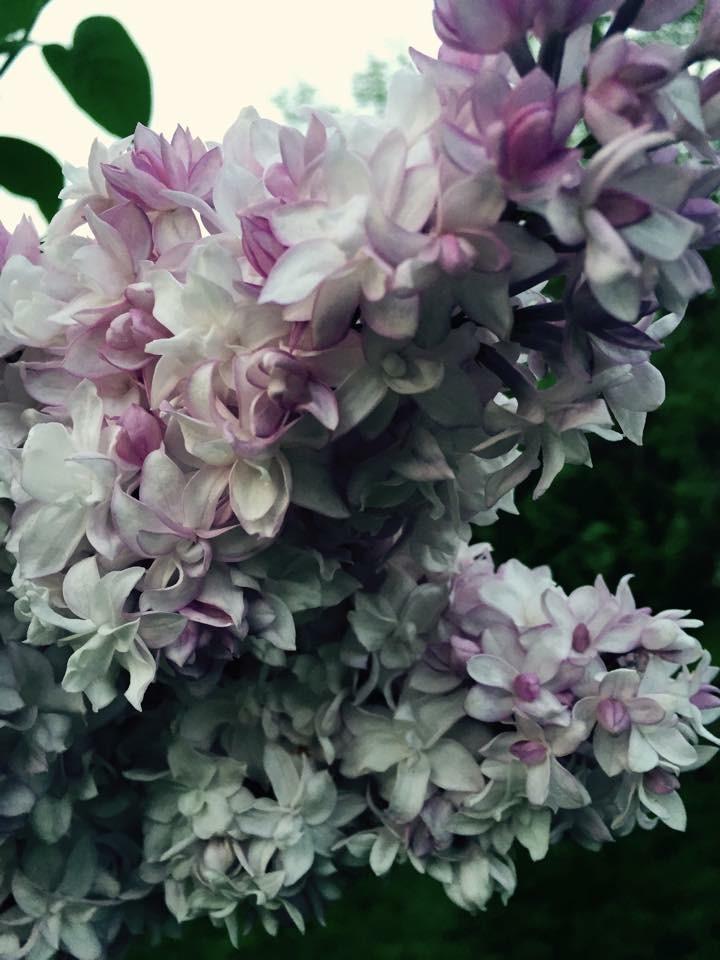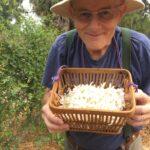
Why not soak the lilac florets directly in alcohol to extract the scent? The answer lies deep inside the plant morphology. We have to work with this morphology and in so doing we must understand two key principles...

Lilacs are a flower that cannot be steam distilled. The heat of the steam distillation process destroys the delicate scent. Enfleurage, in a two step extraction is the most sublime way to achieve a beautiful fragrant lilac absolute.
In traditional Enfleurage Lilacs are laid on a substrate of solid fat in order to adsorb the fresh scent exhaling from the tiny florets. First we must know that Inside each floret at the base of the tubule that attaches to the sepals, is a scent gland that produces scent. We want to keep the floret alive and fresh so that little factory inside the tiny floret continues to pump out scent onto the fat substrate for 24 hours. Leaving the sepals intact on the floret as is shown in the photo at the top, allows for the maximum lifespan of that floret once it is plucked from the lilac head. Moisture and natural chemical compounds produced by the lilac are held in the small chamber inside the sepals and continually feed the scent manufacturing process going on inside the floret.
Secondly, in the anatomy of the lilac blossom, there is not much scent inherent to the flesh of the lilac petals as there is, for instance, in rose petals. In Roses, there is also a scent gland, but in addition, rose petals themselves contain a rose oil that embodies the scent of the rose. This oil in the rose petals can be extracted directly into alcohol or another solvent. With lilacs the scent must be captured from the fresh florets as the little tubules exhale into the air and onto the enfleurage corpse. Dousing the fresh lilac florets in alcohol yields very little scent and actually kills the scent producing gland, further reducing the potential for extraction. So placing the fresh lilacs in alcohol or performing a maceration, is not sufficient. We maximize the capture by keeping the florets fresh, alive and undamaged, lightly resting them on the fat substrate.
In the concept of enfleurage it must be understood that solid fat at room temperature, has the innate propensity to absorb aromatic compounds from the air. This principle was graphically demonstrated to me by a colleague who worked for the Department of Health in New York City. His job involved testing sticks of butter stored in restaurant walk-in refrigerators. He was testing for high levels of formaldehyde in the butter. If he found high levels of formaldehyde in the butter, he would have to shut the restaurant down. How did the formaldehyde get into the butter, you might ask? Typically the restaurant with the offending butter was within 300 feet of a dry cleaning operation. Formaldehyde is an aromatic compound, absorbed through the air. It can waft and seep its way into wrapped, packaged, and boxed sticks of butter, stored inside a locked walk-in refrigerator. A lightbulb went on in my chemist’s brain, and throughout the years, I kept this information stored away, to one day exploit this principle in an effort to extract the nearly impossible lilac absolute.

Enfleurage Workshops
Enfleurage Kits
The Art of Enfleurage
Contact Charle-Pan for details:
charlepan@cherryvalleylilacs.com
ph 518-366-3400





